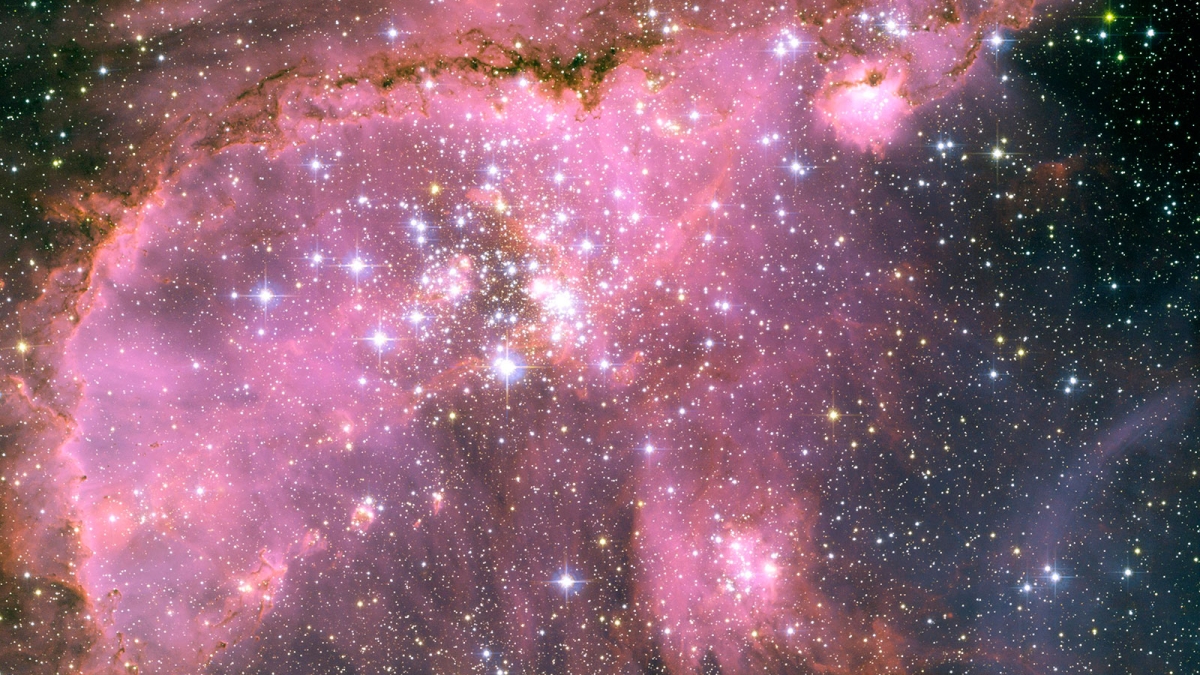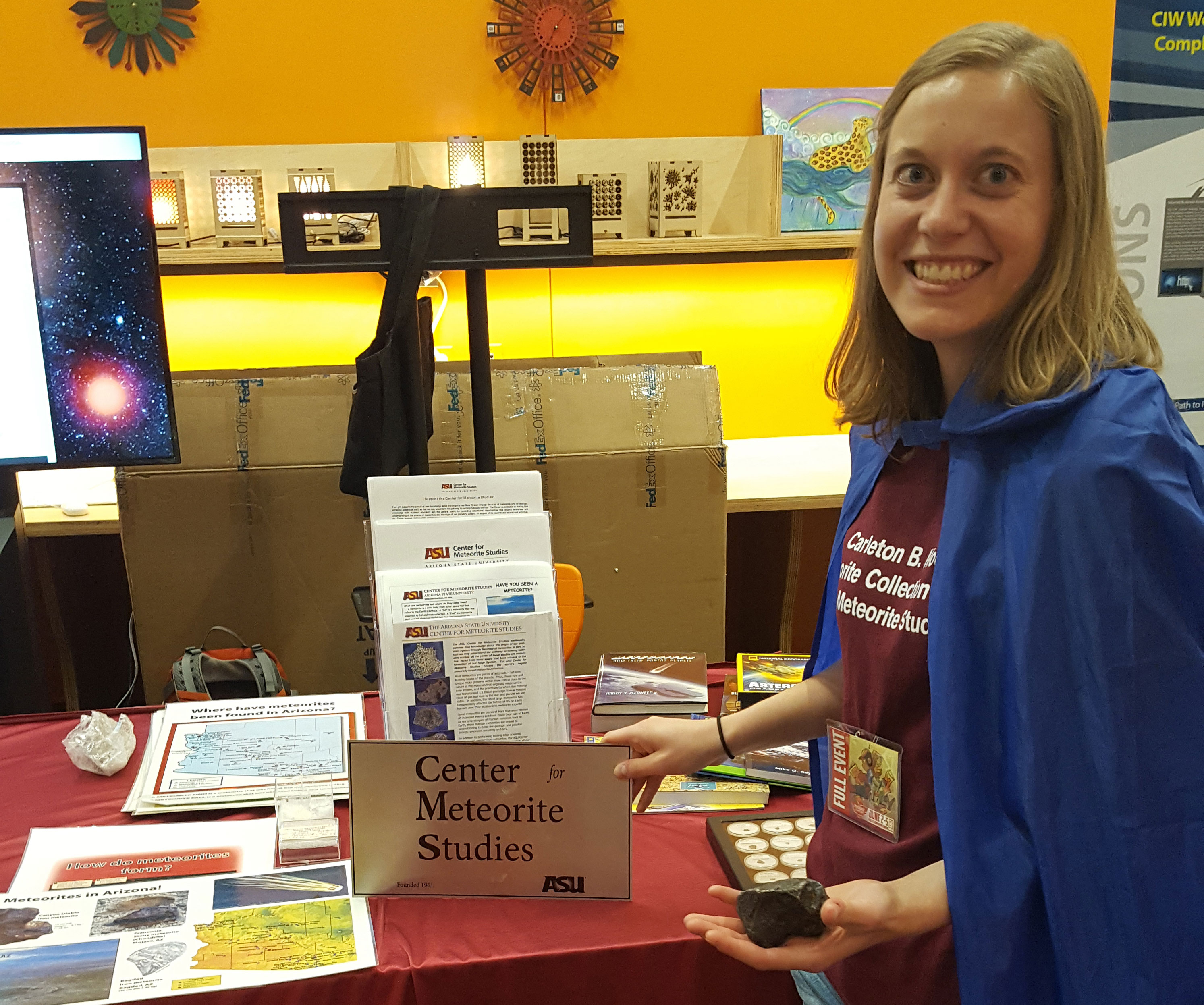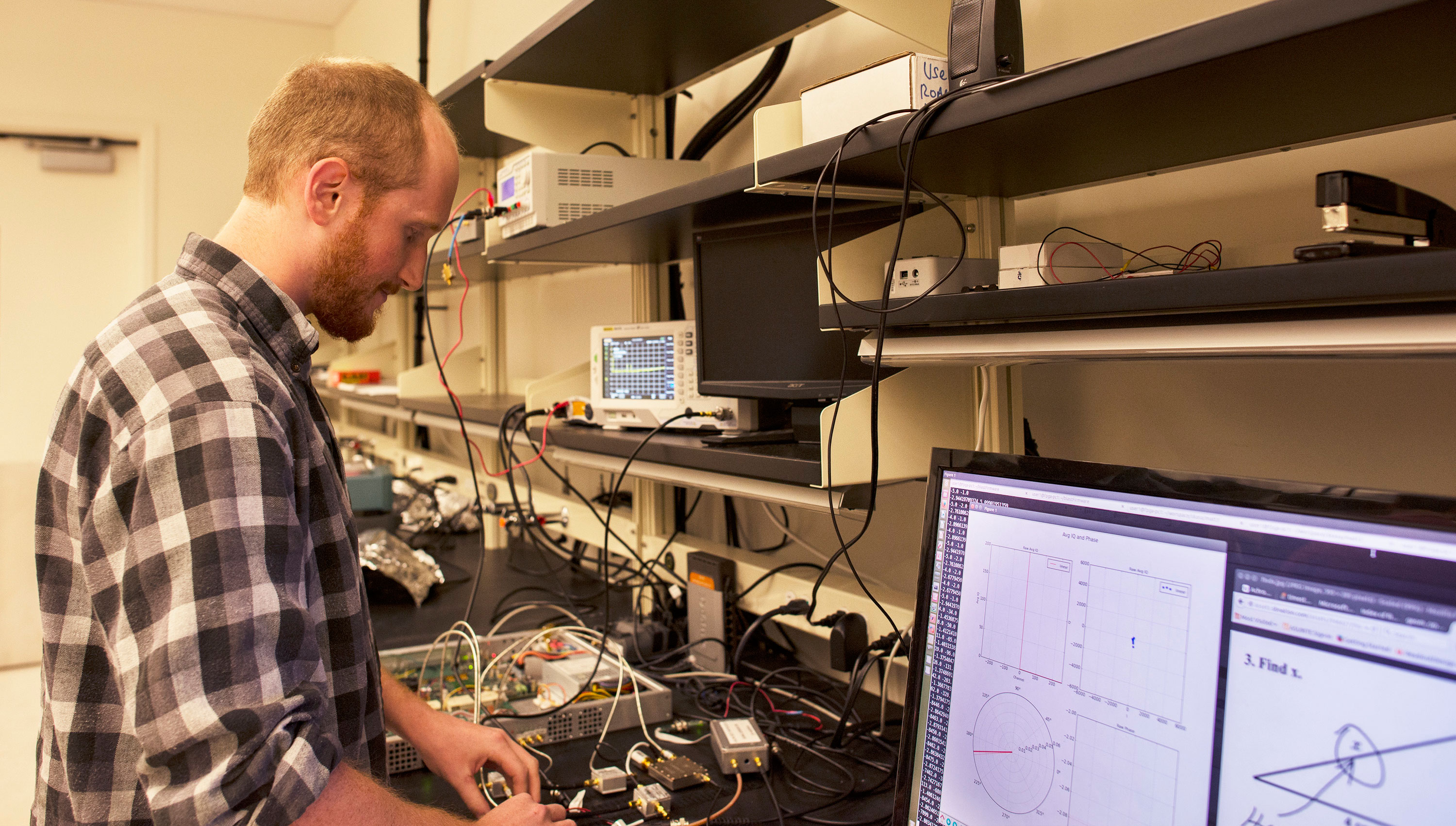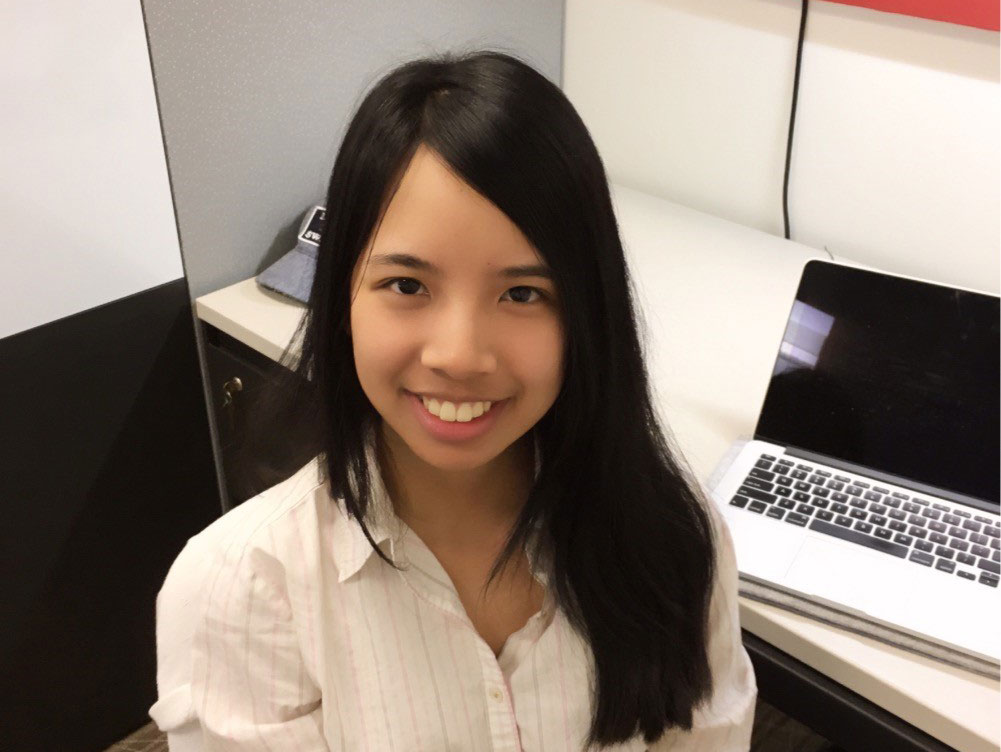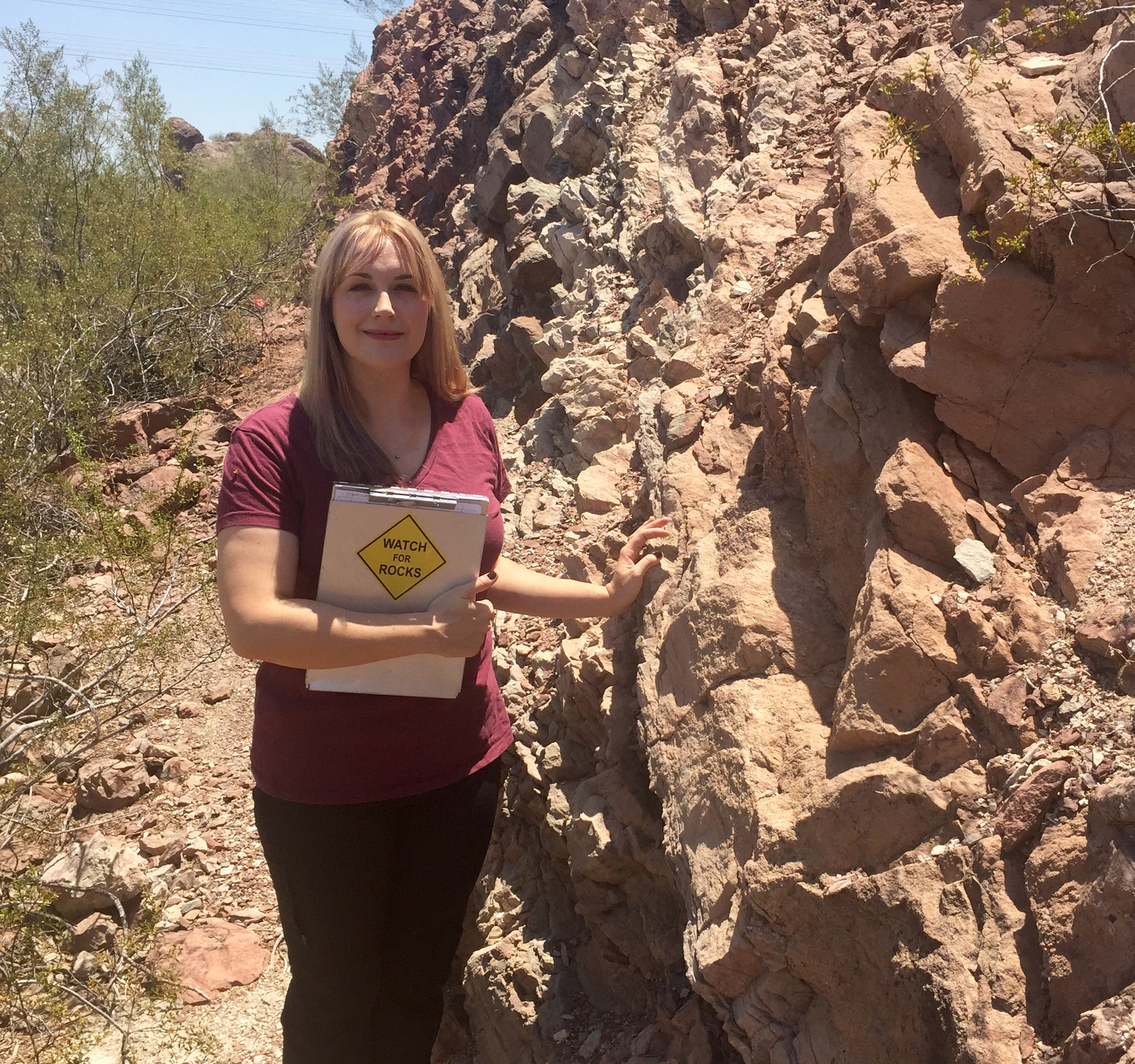Graduate students Emilie Dunham, Sam Gordon, Chuhong Mai and Megan Miller, of ASU’s School of Earth and Space Exploration, have received coveted NASA Earth and Space Science Fellowships (NESSF) for 2016.
“Being selected for an NESSF award is a mark of distinction,” says School of Earth and Space Exploration (SESE) assistant professor Manoochehr Shirzaei. “Many of the previous recipients of this fellowship have emerged as leaders in their scientific communities.”
Emilie Dunham
Emilie Dunham, a graduate student in geological sciences, will use her fellowship to continue to gain an understanding of the astrophysical environment in which our solar system was born.
“Emily is an incredibly talented analyst and budding scientist, and represents the best of our graduate students here in SESE,” says SESE professor Meenakshi Wadhwa.
Sam Gordon
Sam Gordon working on a ROACH board (Reconfigurable Open Architecture Computing Hardware).
Sam Gordon, a graduate student in astrophysics, is currently a team member on a collaborative experiment called BLAST-TNG (Balloon-borne Large Aperture Sub-millimeter Telescope - The Next Generation). This large telescope will fly on a NASA balloon from Antarctica in December 2017 to peer into star-forming regions called molecular clouds.
After completing his PhD, Sam says he “plans to continue contributing to experiments that push the limits of our knowledge of the physics of the universe, what makes it tick, and how we fit into the whole picture.”
Chuhong Mai
Chuhong Mai is developing models in the virtual world. Photo by Byeongkwan Ko
Chuhong Mai, a graduate student in astrophysics, will use the fellowship to devote her attention to how Earth-like planets may acquire, and even retain, hydrogen-rich atmospheres from the proto-planetary disks in which they form. The results of her proposed modeling efforts will integrate studies of exoplanets and terrestrial geochemistry.
“I am thrilled that Chuhong succeeded in securing one of these very competitive fellowships,” says SESE professor Steven Desch. “Out of 180 applications nationwide, only 28 were selected for funding.”
Megan Miller
Megan Miller stands next to a road-cut as part of a sedimentology lab. Photo by Sarah Robinson
For Megan Miller, a graduate student in geological sciences, this fellowship will allow her to use satellite radar imagery to observe land subsidence due to the removal of Arizona’s groundwater, then rigorously analyze and interpret the data in an effort to improve our understanding of the aquifer systems and associated hazards.
Megan, a former stockbroker, is also the recipient of a 2016 National Science Foundation East Asia and Pacific Summer Institutes for U.S. Graduate Students award. She is spending eight weeks this summer studying the effects of the 2010-2011 Canterbury earthquake sequence on the storage properties of the Christchurch, New Zealand, groundwater system.
The NASA Earth and Space Science Fellowship program awards students from accredited U.S. universities on behalf of individuals pursuing Master of Science or doctoral degrees in Earth and space sciences, or related disciplines. The purpose of NESSF is to ensure continued training of a highly qualified workforce in disciplines needed to achieve NASA’s scientific goals.
Top photo: This view of one of the most dynamic and intricately detailed star-forming regions in space, located 210,000 light-years away in the Small Magellanic Cloud (SMC), a satellite galaxy of our Milky Way, was taken by the Hubble Space Telescope. At the center of the region is a brilliant star cluster called NGC 346. A dramatic structure of arched, ragged filaments with a distinct ridge surrounds the cluster. Photo by NASA, ESA and A. Nota (STScI/ESA)
More Science and technology

Science meets play: ASU researcher makes developmental science hands-on for families
On a Friday morning at the Edna Vihel Arts Center in Tempe, toddlers dip paint brushes into bright colors, decorating paper fish. Nearby, children chase bubbles and move to music, while…

ASU water polo player defends the goal — and our data
Marie Rudasics is the last line of defense.Six players advance across the pool with a single objective in mind: making sure that yellow hydrogrip ball finds its way into the net. Rudasics, goalkeeper…

Diagnosing data corruption
You are in your doctor’s office for your annual physical and you notice the change. This year, your doctor no longer has your health history in five-inch stack of paperwork fastened together with…


